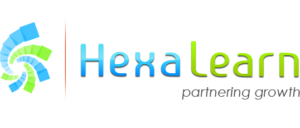SCORM Data Per Language
It seems simple: convert message, swap media, export new SCORM and upload to the LMS. But also for learning programmers, this method can insidiously double workload, balloon expenses, and include complexity to upkeep when establishing multilingual eLearning training courses. Let us learn just how this affects the eLearning advancement process and exactly how Training Developers and developers can build more scalable multilingual services.
1 Advancement Expenses: Time, Tools, And Version Control
Translation And Localization Bottlenecks
- Each program update– be it a brand-new examination, image, or compliance adjustment– means restoring every language translation. Developers need to repackage, re-test, and re-upload each data by hand, slowing down model cycles down.
- Localization groups need to handle language-specific properties (sound, video, subtitles, text on-screen), all of which need developer intervention for every SCORM output.
Authoring And SCORM Maintenance
- Developers often invest hours reconfiguring materializes, adjusting LMS monitoring, and confirming communications for every variation.
- Each language becomes its very own “mini-project,” raising QA and LMS testing cycles for designers and reviewers alike.
Storage And Deployment Challenges
- Maintaining several SCORM versions consumes extra repository room and LMS transmission capacity. Designers need to additionally keep constant file frameworks across all versions to prevent confusion.
2 Indirect Growth Costs: Complexity And Risk
Version Drift Across Languages
- When designers take care of numerous SCORM outputs, updates might not turn out consistently. Learners in various areas may access obsolete variations– a concern that reflects poorly on both L&D and compliance teams.
Greater Support Tons
- Insects unique to one language version usually require developer-level debugging.
- Dissimilar SCORM setups can cause inconsistent LMS monitoring or conclusion coverage– draining pipes development and assistance sources.
Scalability Roadblocks
- For eLearning designers, every extra language means brand-new writing, QA, and product packaging jobs. As multilingual need grows, keeping parity across variations becomes unsustainable.
3 Effect On Discovering Experience
Delayed Rollouts
- Learners might wait weeks for upgraded variations in their language because developers are active restoring multiple SCORMs.
Irregular Knowing Quality
- Differences in navigating tags, inscriptions, or UI layouts across versions can perplex students and damage layout consistency.
- Without combined advancement process, ease of access elements (alt text, records, subtitles) may differ in top quality from one language to one more.
Smarter Methods For Establishing Multilingual eLearning
Develop One Course– Release in Several Languages
New authoring software application allow developers to build a solitary SCORM package with language selection controls. This technique maintains the course logic centralized however saves the translations as modular sources– making it much simpler to obtain constant results throughout languages.
Funded material – short article continues listed below
Trending eLearning Writing Devices
Externalize Text And Media Possessions
By preserving message, inscriptions, and UI labels in outside source files (e.g., XLIFF, JSON, XML) the SCORM can be changed by developers in terms of translations without recreating the whole SCORM. This approach assists in quicker updates and improved partnership between localization teams and Instructional Designers.
Leverage LMS Localization Includes
Numerous LMS platforms sustain multilingual UI components, notifications, and even training course titles. Designers can concentrate on content-level localization as opposed to replicating entire plans.
Automate QA And Variation Control
Integrating version control (e.g., Git, SVN) and automation devices aids eLearning programmers track adjustments, restore multilingual training courses successfully, and stop version drift. Automated screening scripts can look for busted links, missing inscriptions, or irregular manifests across languages.
The Development ROI
Framing the concern from an advancement viewpoint aids stakeholders comprehend business situation:
- Reduced workload
For eLearning designers: fewer rebuilds and manual packaging tasks. - Faster updates
Throughout all languages when regulative or material changes occur. - Regular student experience
Throughout locales, boosting high quality and engagement. - Reduced long-lasting maintenance expenses
Making it possible for teams to range international discovering programs efficiently.
Final thought
For eLearning programmers, having different SCORM data by language can make a basic localization task right into a maintenance frustration. The true potential is in rethinking developing multilingual eLearning style– embracing modular, automation-centered style concepts that simplify localization, assurance variation uniformity, and protect quality at range.
With the implementation of central web content versions, LMS localization abilities, and automation systems, growth groups are able to bypass tedious SCORM packaging repetition to concentrate on what is essential: the layout of engaging, obtainable, and reliable discovering experiences for around the world target markets. This unified approach not only simplifies content shipment however also ensures constant learner engagement and efficiency throughout all languages and regions.
